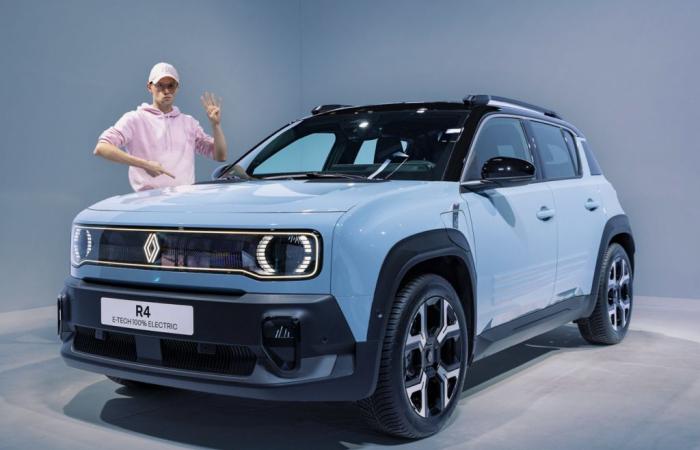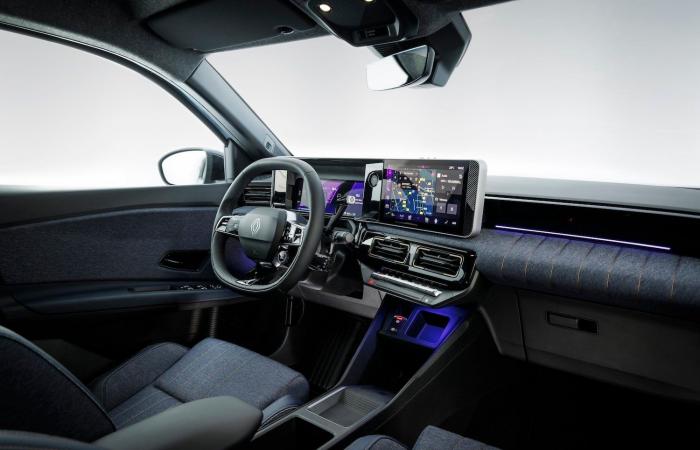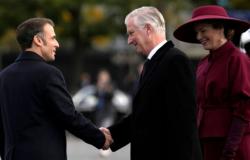The star of the Paris Motor Show is the new 4L! This modern version is a 100% electric urban SUV. Derived from the R5, it offers more space on board and a more practical trunk.
A strong wind of nostalgia is blowing through Renault. After reviving the R5, the Losange is relaunching another of its icons, the 4L. And as with the 5, the 4 is back in a 100% electric version.
Launched in 1961, the 4L was a commercial success. More than 8 million examples were produced until the 1990s, making it the best-selling Renault model in the world. The car was a success because it was practical and versatile, thus being suitable for various uses and driver profiles.
Like its ancestor, the new 4 takes up the principles of practicality and versatility. But there is a change in the positioning! It is no longer a question of a small entry-level city car. The modern 4L is falling into 21st century fashion, so it has become a small SUV.
Also read2024 Paris Motor Show – Renault unveils the Mobilize Duo, the replacement for the Twizy
Be careful not to be tricked by the names, which are misleading. The 4 is bigger than the new 5! The length here is 4.14 meters, or 22 cm more than the new R5. The height is 1.57 m, as for the Captur. Besides, the 4 is to the 5 what the Captur is to the Clio.
A very special grille
If the category changes, the silhouette is faithful to that of the original model. A risky exercise because we cannot say that the 4L is renowned for its looks! The transposition of shapes in the modern world will certainly cause more debate than for the R5.
We therefore find the flat hood, the roof which falls over the trapezoidal rear window or even the straight tailgate. On the front side, there is still a horizontal grille which encompasses the round headlights (well almost round here).
The whole thing has, however, been revised in a technological universe. In 2024, there is no longer a chrome surround. The outline is a light line. With a particularity, it is without interruption, which according to the brand is a world first.
To achieve this, the manufacturer therefore imagined a large one-piece piece 1.45 meters wide. Note that the logo is also illuminated. We are already afraid for such an element in the event of an impact. Renault wants to be reassuring, indicating that it is possible to replace only the polycarbonate protection, without having to touch the illuminated elements.
Among the other nods to the original 4, we have the bumpers in the shields, which echo the hooks which held the bumpers, the three lines sculpted in the doors, which recall the plastic protections of the GTL of yesteryear, or even the capsule-shaped lights.
Renault offers numerous customization options, with seven body colors, including “Hauts-de-France” blue/green, the possibility of having a black roof, or even an extended container (black covers the hood and the contour of the grille), and personalization decorations for the hood, roof or bumpers.
An R5 with plenty of space
Going inside, you can have a feeling of déjà vu. Renault has in fact taken over the entire dashboard of the R5. Which is not a first, after all, Mégane and Scénic, for example, have the same presentation. But the dashboard of the new R5 is inspired by the previous R5s, here, so we don’t really have a historical reference to the 4L. The difference will come from the coverings.
As in the 5, we therefore have two 10-inch screens united in a single, thick frame, which slightly reduces the field of vision. And even with a large touch screen, we have a lot of physical buttons, a little too scattered (on the steering wheel, to the left of the steering wheel, between the seats, etc.).
The change compared to the R5 is at the rear. The 4 corrects a defect of the 5, its poor habitability in the bench seat. Fortunately, because it is bigger! It even benefits from a wheelbase stretched by 8 cm. So we have more leg room. But the high floor still prevents you from easily sliding your feet under the front seats, in order to be even more comfortable. Headroom is similar to that of the Captur.
Another fault of the R5 corrected is the trunk. Already, its access is facilitated. The tailgate includes part of the shield, which allows for a relatively low loading threshold (61 cm), without stepping with the floor. The hold has been well thought out, with regular shapes. The volume is 420 liters, but 35 liters corresponds to storage under the floor. Renault offers a removable and washable tray for this. It can also be accessed via two hatches, which will provide as much access as possible if you put the charging cables there.
On the other hand, when you fold the seat, you have a significant step that forms. Renault wants to make amends with the possibility of folding the front passenger seat, which gives the possibility of transporting long objects.
It’s not bad, but in terms of practical aspects, we say to ourselves that the car could do better, not particularly innovating in terms of storage or everyday tips. On the other hand, we welcome the presence of the large canvas sunroof, a nod to the ancestor, well designed so that the rear occupants also benefit from it.
400 km of range
The “4L” is therefore derived from the R5. We find its AmpR Small platform, with its multi-link rear axle, an element which contributes to the good road qualities of the 5.
There are two technical configurations. Basically, a 120 hp engine is coupled to a 40 kWh battery, which will give a range of just over 300 km. PThen there is a 150 hp version with a 52 kWh battery. There, the range is 400 km. Which is average for the category.
However, we had hoped that the size greater than the 5 would make it possible to accommodate a slightly larger battery, in order to have a range which would make long journeys easier. For charging, both variants will have an 11 kW bi-directional onboard charger, with V2L and V2G functions.
As a reminder, with the V2L, you can connect a small electrical appliance to the car, for example a vacuum cleaner. In V2G, the car can send electricity back into the network. Renault offers a terminal and an electricity contract adapted to this function, with the promise of halving the cost of recharging. The car will in fact recharge when electricity is cheaper and can resell electricity when it is more expensive (during peaks in consumption).
The One Pedal arrives at Renault
In terms of fast charging, it will be up to 80 kW in a 40 kWh battery and 100 kW in a 52 kWh battery. The charging planner integrated into the Open RLink multimedia system will trigger pre-conditioning of the battery when approaching the terminal.
There is still a technical novelty with the 5. The 4 has a One Pedal function. Here it will complement the first three modes of regenerative braking, maximizing it to the point that the vehicle stops without having to use the brake pedal.
If the new 4L is an SUV, there is no all-wheel drive on the program. Renault offers advanced Extended Grip traction control, with two modes adapted to slippery surfaces. The car also offers a towing capacity of 750 kg.
This new 4, which will be manufactured in France in Maubeuge, will be launched in the first half of 2025. Prices are not yet known, but we expect a range similar to the 5 with prices logically higher by a few thousand euros. .
The rest of your content after this announcement
The rest of your content after this announcement







